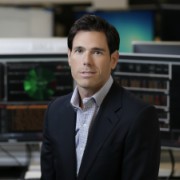It’s 3:45 p.m. The day is almost done; just a few more trades to do. Do you know where your order is? And has it been filled?
Increasingly, traders are waiting until the final minutes of the day to trade. Liquidity is more plentiful. Spreads are tighter. Volatility is lower compared with the open. Thus, trading is cheaper and liquidity at its highest.
This could well be the best time to execute an order.

Thats the motivation behind agency-broker BTIGs newest algorithm – the benchmark market on close algorithm within their suite of portfolio trading strategies. Built by the firms financial engineers, BTIGs latest algorithm streams historical close and imbalance metrics to determine a reverse implementation shortfall. With increasing volumes at market close, minimizing impact and slippage versus a primary closing benchmark is ideal for traders focused on maximizing client performance, according to Thomas Smykowski, Managing Director and Head of Global Portfolio and ETF Trading, at BTIG.
Nowadays, in the current six-and-a-half-hour trading day, upwards of 38 percent of all daily volume is being done during the 30 minutes following the market open and 30 minutes before the close, according to market professionals. Six years ago, less than 30 percent of all daily volume was done during the same two time periods.
BTIGs portfolio optimizing algorithm is data-driven in design with state-of-the-art quantitative analytics coupled with an anticipatory modeling methodology.
Equipping our portfolio traders with technology that predicts momentum on the horizon helps us meet and exceed clients performance objectives, Smykowski said While working orders, we continue to employ tools, with sophisticated logic, that intuitively respond to the market and leverage advantageous end of day volumes.
As Smykowski explained to Traders Magazine, the algorithm examines a broad time period around the close as opposed to limiting itself to the final 15 minutes (3:45pm) of the trading day.
The time frame in which the algorithm operates is undefined and depends on the name it is trading, as well as other factors such as average historical closes, average spreads, volume throughout the day, etc., Smykowski said. The algo analyzes such data points as these and others to assess how it will parse an order and what it will execute against.
The algorithm, once it has evaluated all the aforementioned factors, then also looks at the imbalance feeds from NYSE and NASDAQ and then will interact with that liquidity.
The algo looks for either large buy or sell orders to pair off the imbalances, Smykowski said. What makes this algo special is that it analyzes closing volumes and imbalances on an average basis and generates a quality rating. Then based on these factors, it will dynamically determine the optimal trade horizon.




